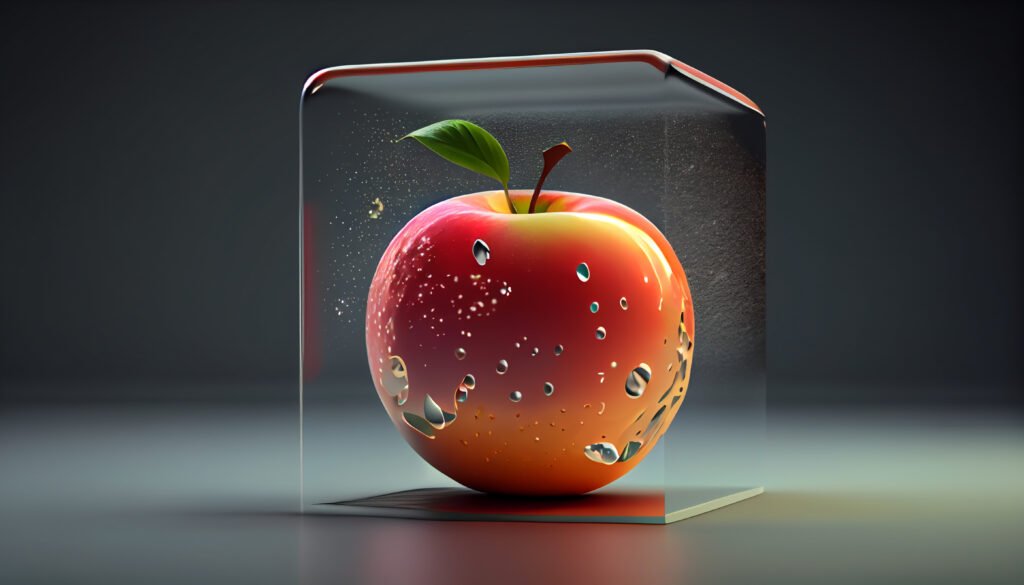
One important but frequently disregarded component of daily life is flavor. Food and beverages have the power to entice our taste buds, bring back memories and feelings, and stir up strong emotions in us. It is a multisensory experience that includes not only taste but also texture, aroma, and even appearance. Come along on a voyage with me as we explore the world of flavors, sort through their complexity, and learn new perspectives on the mouthwatering experiences all around us. Prepare yourself for an unparalleled sensory experience!
The Five Basic Tastes:
Though there are many components that interact to create our sense of flavor, the five basic tastes are sweet, salty, sour, bitter, and umami. These flavors, which are present in a wide variety of the foods and drinks we eat and drink every day, form the basis of our gustatory experience. Sweetness is frequently connected to desserts and other sugar-filled foods. It is a flavor that everyone enjoys and is frequently associated with happiness and contentment. A perfectly ripe strawberry or a rich, velvety chocolate bar come to mind. The sweetness of these foods instantly satisfies our cravings. Despite being misinterpreted and connected to negativity, bitterness is a key component of the flavor of many foods and beverages. Coffee, dark chocolate, and some leafy greens all have bitter flavors. Even though bitter tastes might take some getting used to, when used well, they can give a dish depth and complexity. Lastly, there is umami, a flavor that is frequently characterized as savory and meaty. Foods like aged cheeses, soy sauce, and mushrooms contain it. Rich and satisfying flavor depth are added by umami, which is why it’s a mainstay in many culinary traditions.
Mouthfeel and Textures:
Although mouthfeel and textures are sometimes disregarded when discussing flavor, they are vital components of our whole sensory experience. Consider the distinction between biting into an apple that is crisp and one that is soft and mushy. Our enjoyment of a dish can be greatly enhanced or diminished by its texture, which gives flavors a whole new meaning. Texture describes how a food or beverage feels in our mouths, whereas mouthfeel refers to the bodily experiences we have when consuming it. These feelings, which can be anything from crunchy and chewy to creamy and smooth, have a big impact on how we perceive flavor. Consider ice cream as an example. A scoop of vanilla’s velvety smoothness can add an opulent and decadent element to our palates. A pint of chunky, textured rocky road, on the other hand, provides a delightful contrast of crunchy, gooey, and creamy components, making for a more dynamic and fulfilling mouthfeel. Another way to incorporate texture into a dish is to add interest and surprise. Our taste buds are kept interested and captivated by the delightful contrast between the tender interior and the crispy golden skin of a perfectly roasted chicken or the crackle of a thin caramelized sugar crust on a crème Brule.
The Role of Aroma in Flavor:
Taste alone is only one aspect of flavor; it has many facets. Aroma is one of the main elements that gives flavor depth and complexity. Since our sense of smell aids in the identification and distinction of different foods and beverages, it is closely related to our perception of flavor. Volatile compounds that are released from our food and drink produce aroma. These substances interact with the olfactory receptors in the rear of our nasal cavity when we bite or drink, sending messages to our brains. This is why having a stuffy nose makes it difficult for us to taste food as it impairs our sense of smell. Consider your favorite dishes or meals. It’s likely that the scent contributes significantly to your pleasure. Aromas have the ability to make our mouths water and prime our taste buds for the flavors to come, whether it’s the warm, comforting smell of freshly baked bread, the enticing aroma of coffee brewing in the morning, or the tantalizing smell of sizzling bacon. Strong memories and feelings can also be evoked by aromas. While the aroma of freshly cut grass may remind you of carefree summer afternoons spent as a child, the scent of cinnamon may bring back pleasant memories of holiday get-togethers with family. Smell has a profound emotional impact and can significantly improve our entire sensory experience. Aromatics and flavorings are frequently used by chefs and food scientists to improve the flavor of food. Herbal additions such as turmeric, coriander, and cumin give distinct flavors and aromas. In a similar vein, addition to adding to a dessert’s sweetness, ingredients like almond or vanilla extract also highlight their aromatic qualities. When it comes to wine tasting, professionals frequently take their time sniffing the aroma from a glass before taking a sip. This enables them to distinguish between the various aromatic notes that are present, like berries, citrus, or even faint oak notes from the barrel-aging process. The scent reveals important details about the flavor profile of the wine and aids in our understanding of its complexity.
The Influence of Visuals:
Flavor is experienced not only through our sense of taste and smell, but also through our sense of sight. One intriguing part of our sensory experience is how images affect how we perceive flavor. Consider how a dish is plated or how colorful fruits or herbs are used to garnish a drink. These visual clues have the ability to heighten our level of expectation and improve our whole eating experience Our expectations are naturally raised when we see a beautifully plated meal. Based on what we observe, we expect a sensory explosion of tastes and textures. Our excitement is heightened by the brilliant colors of the fresh vegetables, the skillfully arranged ingredients, and the visually appealing presentation. Important hints about the flavors we are about to taste can also be found in visuals. A perfectly cooked steak’s rich, savory flavor is suggested by its deep red color. A salad’s vibrant green hue suggests crispness and freshness. We can taste the flavors and textures that lie ahead of us even in the elaborate patterns and textures that a talented pastry chef creates. Visuals can influence our perception of taste in addition to heightening our anticipation. Research has indicated that our perception of a beverage’s flavor can be influenced by its color. In one study, for instance, participants discovered that a drink with a strawberry flavor tasted sweeter when it was pink than when it was green. Strong suggestion-making occurs, and our taste judgments are frequently based on visual cues. Visuals have an impact on more than just how food and drink are presented. Our enjoyment of a meal can be significantly impacted by the atmosphere of a restaurant or dining area. A pleasant and welcoming ambiance can be created with soft lighting, warm furnishings, and lovely table settings, which will improve our senses in general. The next time you have a meal or a drink, stop and enjoy the accompanying images for a moment. Take note of the presentation’s colors, layout, and overall style. Allow the images to arouse your senses and increase your level of excitement. Visuals have a strong effect on flavor, which can take our eating experiences to new levels. Now, as you enjoy the delectable sensations all around you, open your eyes and take a visual journey.
The Science of Flavor Pairing:
Flavor pairing is a fascinating field that delves into the intricate and surprising ways that different tastes can complement and enhance one another. It’s a science that combines inventiveness, artistic ability, and a profound comprehension of the interactions between various flavors on our taste buds. We can create incredibly delicious and memorable dishes by delving into the science of flavor pairing, which opens up a whole new world of culinary possibilities. A fundamental idea in flavor pairing is “taste affinities.” This alludes to the notion that some flavors are meant to complement one another or have chemical compositions that are similar enough to go together naturally. For instance, the tangy sweetness of a lemon meringue pie combined with other sweet and sour flavors produces a delightful balance that is pleasing to our taste buds. Exploring contrasting flavors is another facet of flavor pairing. Here, seemingly disparate tastes are combined to produce a flavorful experience that is both exciting and harmonious. Consider the traditional tastes of salt and caramel or hot Chile and refreshing mint. Our taste buds are captivated by the symphony of flavors produced by these surprising pairings. Chefs and food scientists create inventive and distinctive dishes by utilizing their understanding of flavor pairing. To create a symphony of flavors that entices our senses, they experiment with different combinations of tastes, textures, and aromas. They can push the boundaries of culinary creativity and create unforgettable dining experiences by knowing the science behind flavor pairing.
Emotional Connections to Flavors:
Tastes have a remarkable power to evoke strong feelings in us. Some flavors have the ability to take us back in time, bringing back strong memories and feelings. Flavors have the ability to evoke memories of our past and the people we care about, whether it’s the warm, comforting taste of a homemade meal that takes us back to family get-togethers or the sweet, nostalgic flavor of a childhood treat. Flavors evoke feelings that go beyond nostalgia. They have the power to affect our general wellbeing and mood as well. A delicious concoction can lift our spirits and make us happy and joyful. Consider how a warm, satisfying bowl of soup can bring us instant coziness and contentment on a chilly day. Or the way a spicy, acidic meal can arouse our senses and give us a boost of energy. A sense of familiarity and comfort can also be derived from flavors. They may comfort us spiritually or act as a warm hug. When we’re feeling stressed or depressed, we frequently turn to our favorite foods, finding comfort and security in the flavors that evoke these feelings. A much-needed break from life’s struggles can be had from these flavors, which can give us a sense of stability and bring back good memories. Flavors can also stimulate our imagination and motivate us to consider novel ideas. A taste that astonishes and delights us piques our interest and motivates us to venture beyond our comfort zones. It broadens our horizons and our palate by introducing us to new tastes and culinary experiences.

Very informative🤭
Thank you